Introduction
Interest in biological products that aim to provide nitrogen to nonlegume crops by fixing atmospheric nitrogen for non-legume grain crops has increased in recent years. While inoculating legumes like alfalfa and soybeans with symbiotic rhizobia bacteria is a way to facilitate the process of converting atmospheric nitrogen into a plantusable form, nitrogen supply from bacteria which asymbiotically fix nitrogen in crops like corn is unknown. University of Wisconsin–Madison conducted field trials to examine if a popular gene-edited asymbiotic nitrogen fixer bacterial product, PROVEN 40, affected corn grain yield or corn grain yield response to nitrogen fertilizer.
Materials & Methods
Trials were conducted at five locations in Wisconsin in 2023. The trials were arranged as standard nitrogen rate trials that included four to eight nitrogen rates per location and treatments with and without gene-edited N fixers (PROVEN40). Gene-edited nitrogen fixers (GENF) were applied following the label in-furrow at Arlington, Arlington 2, Dane Co., and Jefferson Co. locations. It was applied following the label as a seed treatment at the Green Lake location. Individual trial protocol summaries for each location are in Table 1.
| Dane Co. | Arlington | Arlington 2 | Green Lake | Jefferson Co. | |
| Planting date | 5/16/2023 | 5/10/2023 | 5/18/2023 | 5/17/2023 | 5/10/2023 |
| Product & Placement | In-furrow, non-chlorinated water, over top of seed | In-furrow, non-chlorinated water, onto the seed | In-furrow, non-chlorinated water, over top of seed | Seed treatment | In-furrow, well water, just underneath the seed |
| Starter Fertilizer Rate, lb N/ac | None | None | None | 24 lb/ac N (Me SZa) broadcast applied into living cover | 45 lb/ac N (32% UANb) banded except 0N |
| Fertilizer Source | Ureac with NBPTd | Urea with NBPT | Urea with NBPT | Urea with NBPT | 32% UAN |
| Fertilizer Application and Placement |
5/16/2023 Pre-plant |
5/10/2023 Pre-plant |
5/9/2023 Pre-plant & incorporated |
6/9/2023 Broadcast |
Y drop side-dressed |
|
Nitrogen Rate, lb N/ac |
0, 40, 80, 120, 160, 200, 240, 280 | 0, 40, 80, 120, 160, 200, 240, 280 | 0, 60, 120, 180, 240 | 0, 30, 60, 90, 120, 150, 180, 210 | 0, 100, 150, 200 (7, 105, 150, 200 including starter) |
| Harvest | 11/17/2023 | 11/3/2023 | 11/16/2023 | 11/17/2023 | 10/30/2023 |
- a Me SZ: Microessentials SZ (12-40-0-10S-1Zn)
- b 32% UAN: 32-0-0
- c Urea: 46-0-0
- d NBPT: N-(n-butyl) thiophosphoric triamide used as urease inhibitor.
Results
Dane County

Arlington
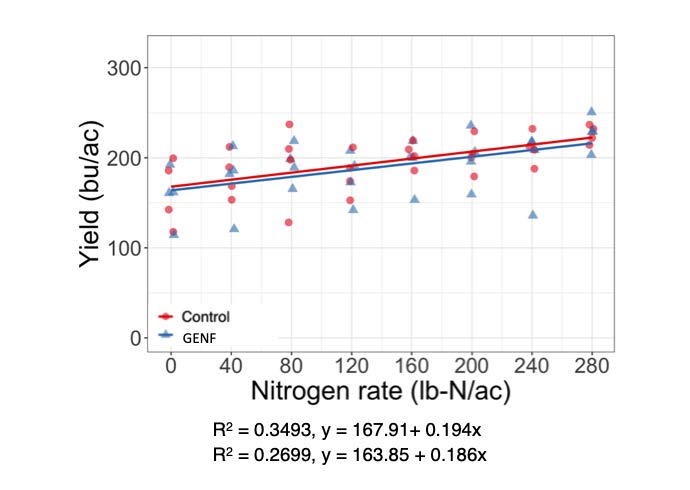
Arlington 2
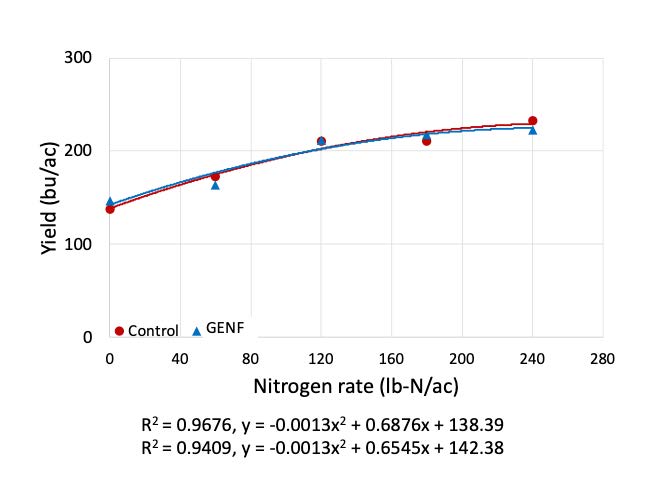
Green Lake
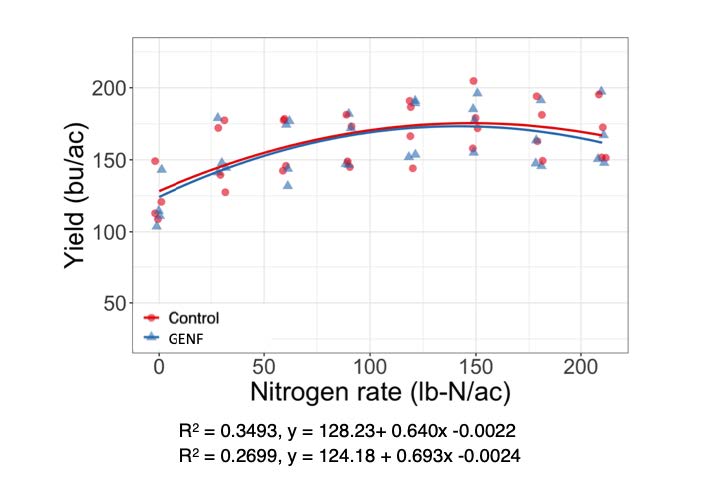
Jefferson
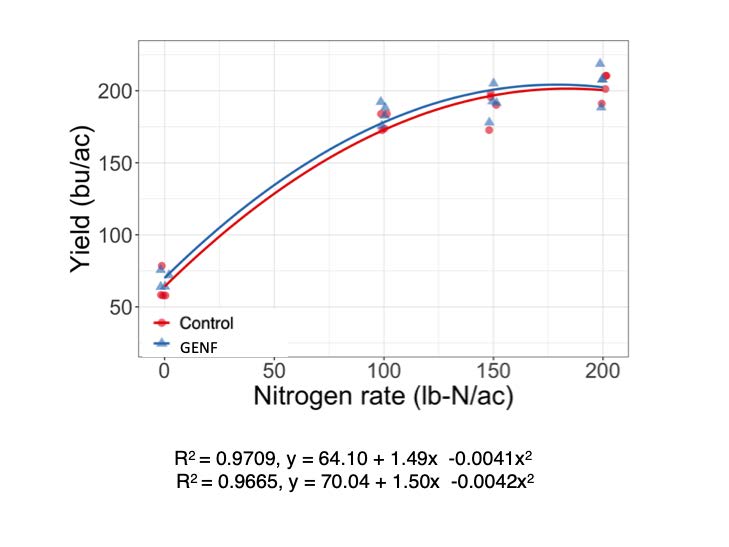
Discussion & Summary
While the concept of using gene-edited nitrogen fixing bacteria for corn and other non-legume crops to help meet crop nitrogen needs in Wisconsin is exciting, there is not significant, current evidence that there is a GENF product capable of accomplishing this.
In 2023 field trials at five Wisconsin sites, corn grain yield and corn grain yield response to nitrogen fertilization was not affected by the application of a GENF product. Continued research in varying growing environments around Wisconsin across multiple years will be useful to provide needed information for those considering the use of these and similar products.
Author's Note
This resource is intended as a quick reference; these products need more testing in Wisconsin, and the University of Wisconsin–Madison neither officially supports nor discourages their use in cropping systems. Always read, follow, and understand the product’s label and any included instructions.
Whenever trying new products for the first time on your farm, it can be helpful to start on a small scale across a few different areas, leaving untreated strips. This way, you can measure if there was an actual yield difference and whether the product’s return on investment (ROI) justifies its continued use or not. One of the most proven, efficient ways to reduce fertility inputs is through soil testing and the use of Nutrient Management Plans. To make one for your farm, contact the county conservation office or NPM specialist serving your area.
For more information on asymbiotic nitrogen-fixing products, refer to the publication “A review of common nitrogen biological products for corn,” available from UW–Madison’s Nutrient and Pest Management Program.

 ▶ Watch: Focus on Corn Silage
▶ Watch: Focus on Corn Silage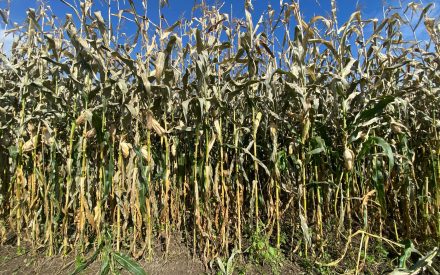 Mycotoxins and Silage - How to Feed the Dairy
Mycotoxins and Silage - How to Feed the Dairy 2024 Wisconsin Corn Hybrid Performance Trials
2024 Wisconsin Corn Hybrid Performance Trials ▶ Watch: 2025 Crop Input Cost Expectations
▶ Watch: 2025 Crop Input Cost Expectations


